It’s an unfortunate truth of our time that Africa’s wild animals are struggling under the pressure of human activities. Shrinking habitats, poaching, and more are causing wild populations to dwindle and the list of endangered animals to grow.
However, it isn’t all doom and gloom, nor is it too late. Passionate people from around the world are working to preserve and protect Africa’s magnificent wildlife. And you can support these efforts too.
Here is a breakdown of the top conservation NGOs committed to conserving the magic of wild Africa and beyond. The list is in categories to help you find the causes that are closest to your heart.
African Wild Dogs

Also known as the ‘painted wolves’ of Africa, African wild dogs are wonderful, unique creatures. They’re covered in mottled fur, boasting enormous round ears and long, gangly legs. They’re also one of the most endangered canine species in the world.
The following organizations are set on helping them thrive again.
African Wild Dog Conservancy
The AWD Conservancy aims to protect African wild dogs. They do so through an adaptive grassroots approach, and community-based conservation.
They have many years of experience living and working in Africa. And they have put measures in place to ensure that their work actually makes a difference. They work closely with local people and believe that the well-being of humans and wildlife are interconnected.
Website: awdconservancy.org
African Wild Dog – AZA Species Survival Plan
This Species Survival Plan focuses on African wild dogs in captivity. With the Association of Zoos and Aquariums running the program.
Since 1991, they have been implementing guidelines and regulations for captive wild dogs. It also supports African organizations working to stabilize wild populations.
Their mission is to help ensure the survival of African wild dogs.
Website: aza.org
Painted Dog Conservation
Based in Zimbabwe, the Painted Dog Conservation is making strides in its aim of protecting and growing the country’s wild dog population. They employ dozens of people from local villages to help protect and rehabilitate the dogs. In addition to running education and outreach programs.
Their mission is to protect and increase the range and numbers of painted dogs through hands-on conservation, education, community involvement, and international support.
Website: painteddog.org
Big Cats
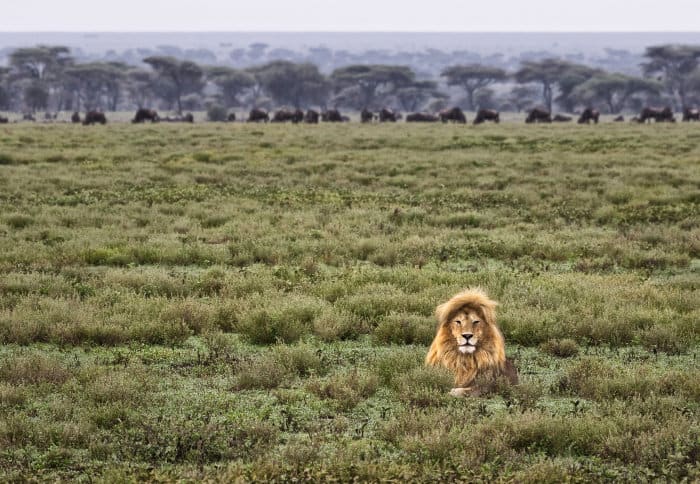
Beautiful, powerful, and elusive, the big cats of our world are firm favorites among animal lovers. And, sadly, many of them are endangered. The following organizations are at the forefront of conserving and defending them.
Big Cats Initiative
From lions in Kenya to snow leopards in the Himalaya, the big cats of the world need help. Lions, cheetahs, leopards, jaguars, and other top felines are quickly disappearing. All victims of habitat loss and degradation as well as conflicts with humans.
Dereck and Beverly Joubert – world-renowned filmmakers and animal activists – aim to address this issue. They founded the Big Cats Initiative in partnership with the National Geographic Society.
It’s a comprehensive program that supports on-the-ground conservation projects. As well as education, economic incentive efforts, and a global public-awareness campaign.
Website: nationalgeographic.org/projects/big-cats-initiative
Cheetah Conservation Fund
The Cheetah Conservation Fund aims to save the cheetah and its ecosystem. Directing their efforts towards conservation, education, and research. The fund envisions a world in which cheetahs flourish in coexistence with humans.
Their mission is to be the internationally recognized center of excellence in the conservation of cheetahs and their ecosystems. CCF works with all stakeholders to develop best practices in research, education, and land use to benefit all species, including people.
Website: cheetah.org
Leopard Conservation Project
Based in Johannesburg, the LCP tackles leopard conservation efforts throughout Southern Africa.
The focus has mostly been to protect leopards from poaching, poisoning, trapping, and over-hunting. However, in recent years focus has shifted to include the collection of data.
They use cutting edge technology to gather important information. Including data on the movements, numbers, and behaviors of local leopards. They can use this data to better protect these animals.
Website: leopardcon.co.za
Lion Aid
With a global scope, this UK based organization aims to save lions and end the decline of wild lion populations. They communicate with powerful people across the world to stop trophy hunting and unethical trade.
They also focus on research, education, and working directly with African tribes. This is to ensure they put sustainable programs in place.
Website: lionaid.org
Lion Conservation Fund
The Lion Conservation Fund supports projects that protect African lions. Particularly in areas of great global conservation importance.
They aim to defend lion habitats while improving the lives of the people who live alongside these beautiful big cats.
Website: lionconservationfund.org
Elephants

Elephants are one of the most widely recognized and well-loved animals in the world. They’re beautiful, lumbering giants who are vastly intelligent, sensitive, and social. Yet for decades, humans have killed and abused them for ivory and entertainment.
These organizations aim to protect and preserve the world’s remaining elephants.
Elephant Voices
Elephants are incredibly intelligent animals, and there is still a lot we can learn about their minds. ElephantVoices is striving to better understand their cognition, social behavior, and communication. While promoting empirically-backed and ethical conservation efforts.
Their mission is to inspire wonder in the intelligence, complexity, and voices of elephants. And to secure a kinder future for them through research and the sharing of knowledge.
Website: elephantvoices.org
International Elephant Foundation
Established in the 2 years preceding the 21st century, the EIF was born to protect elephants around the world.
Their mission is to support and operate elephant conservation and education programs both in managed facilities and in the wild. With emphasis on management, protection, and scientific research.
Website: elephantconservation.org
Pachyderm Power
Pachyderm Power aims to put a stop to the senseless abuse and killing of elephants. They focus their efforts on eliminating the ivory trade, protecting captive elephants, and preserving them in the wild.
Their mission is to protect elephants from abuse and poaching.
Website: kristalparks.com/pachyderm
Save the Elephants
Iain Douglas-Hamilton founded Save the Elephants in 1993. It focuses on eliminating poaching and ivory trafficking.
Their mission is to secure a future for elephants and sustain the beauty and ecological integrity of the places they live. To promote man’s delight in their intelligence and the diversity of their world. And to develop a tolerant relationship between the two species.
Website: savetheelephants.org
The David Sheldrick Wildlife Trust
The David Sheldrick Wildlife Trust is an orphanage for young elephants. Death and other means have separated them from their parents, and they need a safe new home. Over 100 elephants live there in harmony with one another and their full-time carers.
Their mission is to protect and preserve Africa’s Wilderness and its denizens. Particularly endangered species such as elephants and black rhino.
Website: sheldrickwildlifetrust.org
Primates: Great Apes & Monkeys

We, humans, share 99% of our DNA with chimpanzees. They’re more similar to us than any other animal, with the other great apes following closely behind. Apes and monkeys are our closest cousins, and most of them are on the brink of extinction.
The following organizations are fighting to preserve and protect the world’s primates.
Colobus Conservation
The Colobus Conservation aims to promote the conservation, preservation, and protection of primates. Such as the rare Angolan Colobus monkey and its coastal forest habitat in southern Kenya.
Website: colobusconservation.org
Dian Fossey Gorilla Fund International
The Dian Fossey Gorilla Fund International dedicates itself to the conservation and protection of gorillas and their habitats in Africa.
Website: gorillafund.org
Friend a Gorilla
There are no more than 1000 mountain gorillas left on earth, with most of them residing in Uganda. Friend a Gorilla is an initiative by UWA (Uganda Wildlife Authority). It aims to promote and educate the world about Uganda’s mountain gorillas.
Website: friendagorilla.org
Friends of Bonobos
Friends of Bonobos is an American charity that supports Lola ya Bonobo, the sanctuary of the NGO, “Les Amis des Bonobos”.
Website: bonobos.org
Gorilla Organization
Experienced African conservationists lead this international charity. Their goal is to save the world’s last remaining gorillas from extinction. Their grassroots projects are helping to keep gorillas safe from habitat loss and poaching.
Website: gorillas.org
Project Primate
Project Primate Inc. is a not-for-profit organization dedicated to the protection and preservation of chimpanzees. Chiefly, through the rehabilitation of orphaned chimpanzees and through local public education.
Website: projectprimate.org
Rhinos
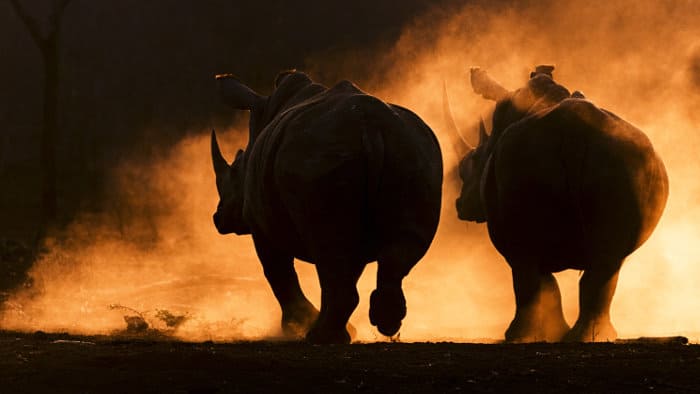
In 2011, the IUCN declared the West African black rhinoceros as extinct. And other subspecies are at risk of the same fate if they’re not cared for, preserved, and protected. Fortunately, some forward-thinking organizations are tackling these issues head-on.
Save the Rhino International
Save the Rhino works to conserve viable populations of critically endangered rhinos in Africa and Asia. They recognize that the future of wildlife is inextricably linked to the communities that share its habitat.
Website: savetherhino.org
General African Conservation Organizations, Foundations, and Projects

Conservation efforts in Africa are not all limited to the usual safari favorites. Some organizations tackle a broad range of wildlife and social issues across the continent. And others focus on lesser-known African animals.
African Conservation Foundation
Founded in 1999, this foundation works to protect and conserve Africa’s endangered wildlife. Along with their habitats. They do so by supporting grassroots conservation efforts and addressing the core issue: the loss of biodiversity.
Website: africanconservation.org
African Parks Foundation
This is the first private park management institution in Africa to tackle the actual long-term management of parks. They do so in public-private partnerships with governments. And by combining world-class conservation practice with business expertise.
Website: african-parks.org
African Wildlife Foundation
The African Wildlife Foundation (AWF) is the leading NGO for wildlife conservation focused solely on Africa.
Their work consists of wildlife conservation, land and habitat protection, and community empowerment.
Website: awf.org
East African Wild Life Society
Since 1961, the East African Wild Life Society has been at the forefront of efforts to protect species and their habitats in East Africa. With a focus on endangered, rare, and threatened animals.
In recent years, they have expanded their horizons to include environmental sustainability efforts.
Website: eawildlife.org
Great Plains Conservation
Great Plains is an initiative to help stem the downward spiral of the environment. And to do something proactive today, by applying what they know best.
Its African initiatives revolve around three species; mountain gorillas, lions, and elephants.
Website: greatplainsconservation.com
Lewa Wildlife Conservancy
The Lewa Wildlife Conservancy works as a catalyst for the conservation of wildlife and its habitat.
It does this through the protection and management of species and the support of community conservation. As well as through development programs, and the education of neighboring areas in the value of wildlife.
Website: lewa.org
Nanofasa
Nanofasa works to protect the last wild zone in Namibia – the home of giant trees, endangered wildlife, and the ancient San tribe.
Website: nanofasa.com
Okapi Conservation
Also known as the ‘forest giraffe’, the okapi is a curious creature that looks to be a blend between a giraffe and a zebra. They’re native to The DRC and are an endangered species.
The Okapi Conservation Project was born with the objective of eliciting support for the conservation of the wild okapi. They work to support individuals, foundations, and institutions managing okapi around the world.
Website: okapiconservation.org
Tashinga Initiative
The Tashinga Initiative provides support for the anti-poaching efforts in Zimbabwe. It assists the Wildlife Management Authority’s current protection and management program. Mainly, they do so through providing training, infrastructure, education, and equipment.
Website: tashinga.org
Tusk Trust
Tusk’s range of over 40 different field projects intends not only to protect endangered wildlife species. It also aims to help alleviate poverty through sustainable development and education. With a focus on rural communities who live alongside wildlife.
Website: tusk.org
Wildlife Direct
Wildlife Direct’s mission is twofold:
- To give those who care about wildlife the opportunity to follow day-to-day activities on the ground. As well as to support to initiatives of their choice and to read about the actual results that their donations have enabled.
- To give a voice to frontline conservationists.
Website: wildlifedirect.org
Zambezi Society
The Zambezi Society is the only conservation group devoted solely to looking after the Zambezi. Which they believe is the finest and wildest river in Africa.
Website: zamsoc.org
Wildlife NGOs with Volunteer Projects

Financial contribution is not the only way to support wildlife protection efforts in Africa. You can get hands-on and stuck in with some of the continent’s top volunteer projects. Doing so is a great way to contribute to wildlife conservation and an experience you’ll never forget.
African Conservation Experience
African Conservation Experience has been sending volunteers to Africa for over a decade. It is the original, most experienced organization for conservation placements in Southern Africa.
They offer a range of volunteer experiences to suit your preferences.
Website: conservationafrica.net
African Impact
African Impact is the top on-the-ground facilitator of volunteer conservation work in Africa. They focus on big cat conservation, black rhino and elephant conservation, and much more.
Website: africanimpact.com
Enkosini Eco Experience
Enkosini Eco Experience offers self-funding volunteers a unique opportunity. You can with some of Southern Africa’s leading wildlife conservation, rehabilitation, and research projects.
They offer a range of experiences in South Africa, Botswana, and Namibia.
Website: enkosini.org
The Top NGOs in Africa are at Your Fingertips
Wildlife conservation NGOs come in all shapes and sizes. From vast multi-nationals to grassroots initiatives on-the-ground, it can be hard to know which ones to support. But with a bit of research and some small contributions, you can help make a difference in the fight to protect wild Africa.
Is your favorite African conservation project not listed? Make sure you add it in the comments section below to help spread the word.
If you want to experience the wonders of Africa with your own eyes, consider booking a tailor-made safari experience.
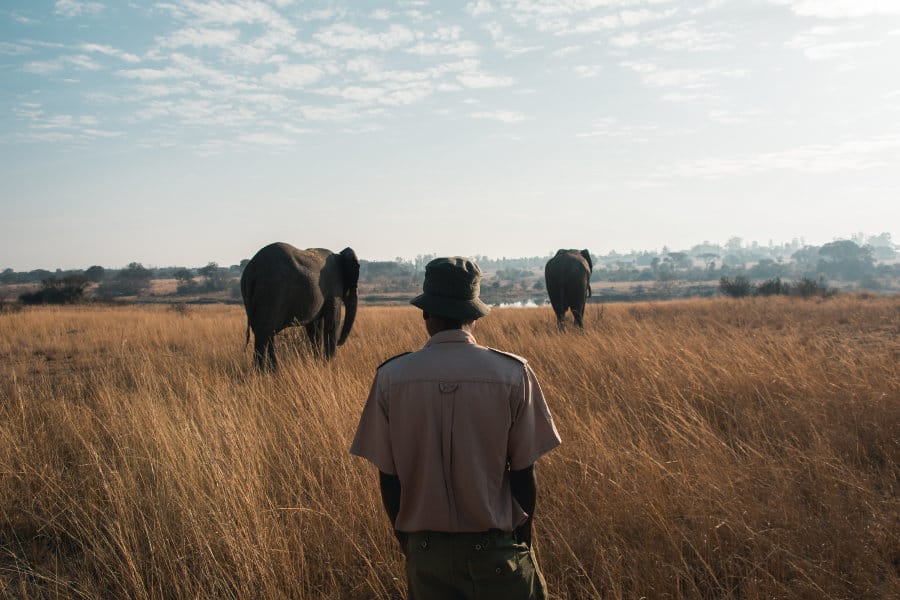
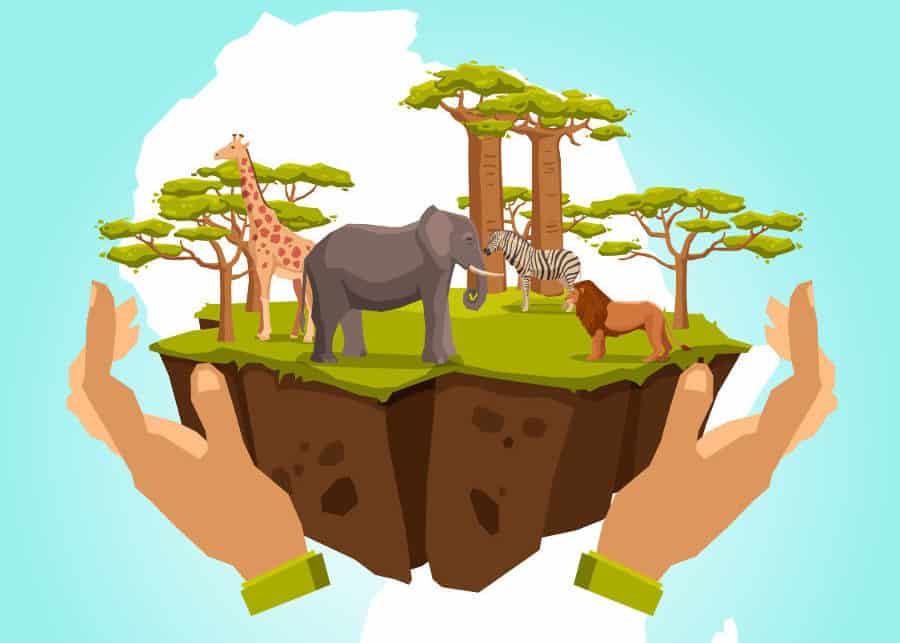
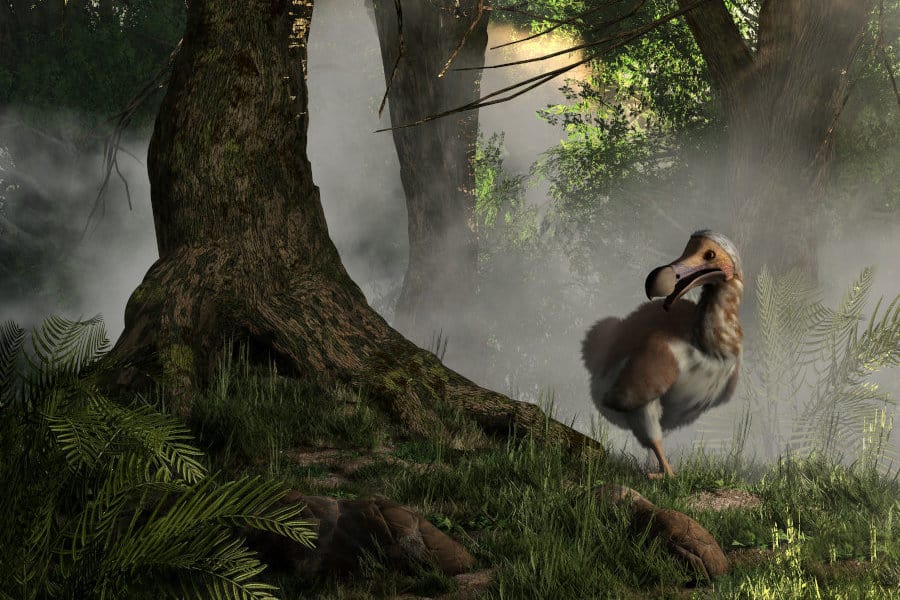
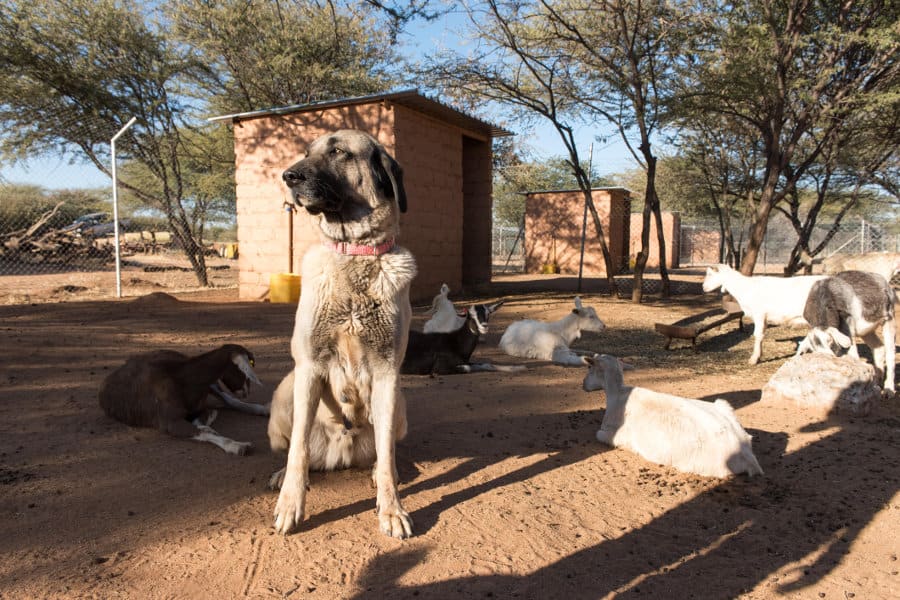
You forgot one of the best ones – the William Holden Wildlife Foundation in Nanyuki Kenya. William Holden became a conservationist in the 50s long before it was even a thing. He created the Mount Kenya Game Ranch (the forerunner of today’s Mount Kenya Wildlife Conservancy) with the goal of creating captive breeding programs to save some of Kenya’s most endangered species. He was also quite aware that repopulating the species’ without teaching the locals why they needed to care about and protect these animals was pointless. It was always his goal to create an education center, but sadly he never got to see his dream come to fruition. Stefanie Powers, his long time partner, picked up where his untimely death left off, and in 2024, the Education Center celebrates 40 years of helping educate Kenyan children and their families about environmental protection. You can find out more at whwf.org.
Thanks so much Jennie, you’re a star! 🙂
This is such good information. Thank you for posting!
Glad you found it useful, Prachi! 🙂
Hi, take a look at this – you can maybe get in touch with the owner PC Ferreira – his properties are in the Karoo/northern Cape. He introduced hippo and buffalo into the reserve and is busy with a rhino project:
https://www.khoisankaroo.co.za/pages/conservation/
Thanks for the info, Ronel! Will definitely take a look… 🙂
The Dian Fossey Gorilla Fund does really great work. Here's Sigourney Weaver's message about the importance of supporting their great work!
http://edition.cnn.com/video/#/video/living/2009/10/11/nr.sigourney.weaver.cnn?iref=videosearch
Great link, thanks a lot for sharing :).
Keep well,
Michael
Very nice blogpost with lots of important info Michael! Hopefully it will give some of the readers an initiative to join some of the causes and donate money.
Thanks Johan, took me a while to compile! 🙂
Indeed, I am hoping this post will provide valuable information for people who'd like to contribute to wildlife!
Cheers,
Mike